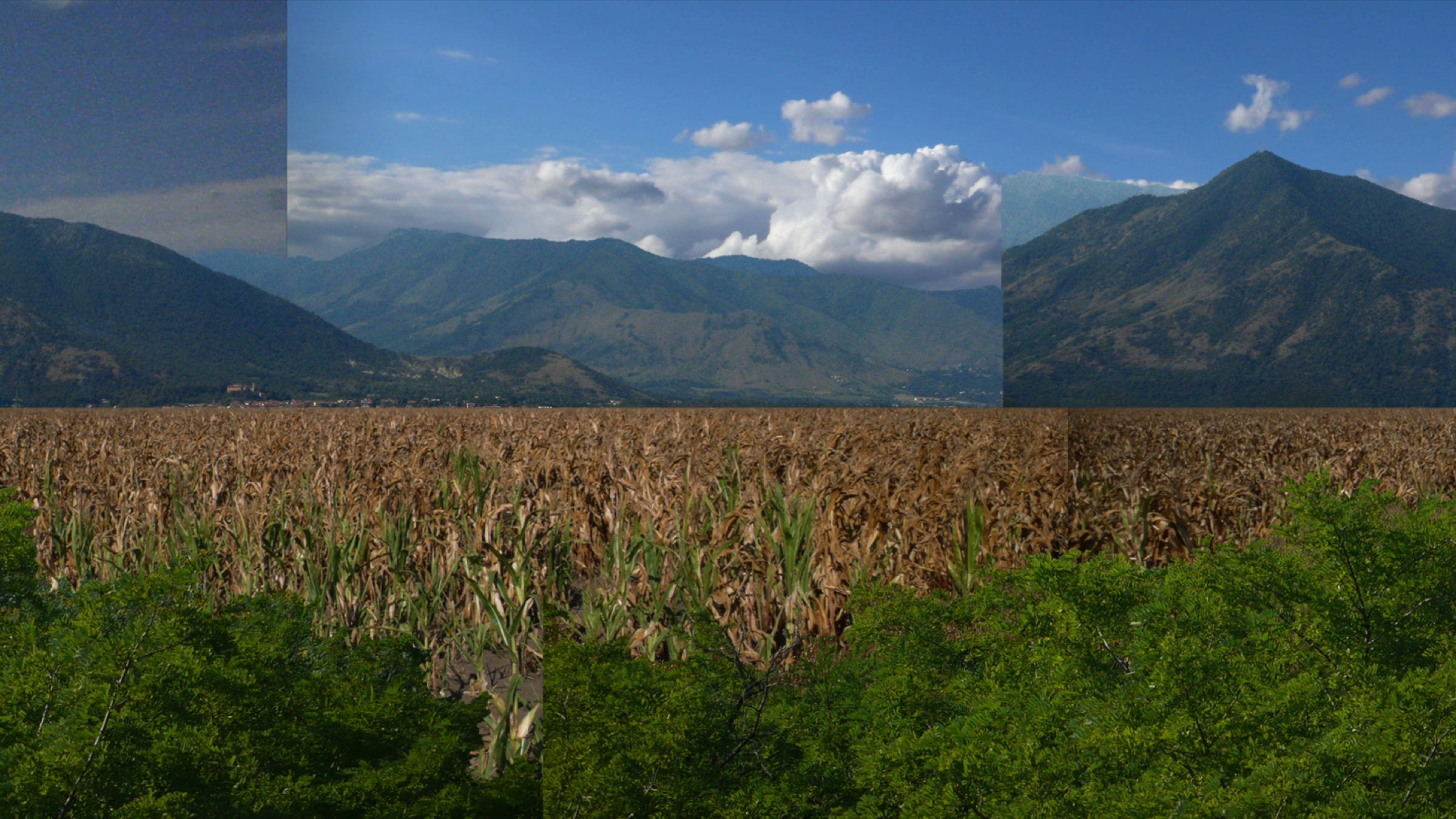Arbitrariness in Landscape
by Jovana Stokic
Video installation Papierschnitzel (2013) directs a spectator to meditative scenery of a view through the window. The image is moving, corresponding with the moving scenery- simulating the moving spot from which it is being observed. The starting point is quite simple: is Nemanja creating a video recording of his train ride experience? The image is being complicated by its degradation, the video insists on permutation and variation of expected scenes. This is how a composite digital moving image is created, the one that builds up new landscape syntax. A newly-derived syntax insists on image surface, underscoring the digital image quality as equalization. The artist points to the superficiality and the surface quality of the image to draw parallel with the virtual observation of the digital, mediated Internet image of the world.

This way, the artwork speaks the language of modernist self-reflectivity, since its subject is arbitrariness of landscape and its detachment from a representative, mimetic image of the world. Nemanja’s landscape renounces nature description, even modernist influence on the ways of nature. Here, the landscape insinuates tension of superficiality, saying more of the need to change the perspective. Similarly, putting this video image in space, the artist conditions spectators to change the perspective of the work and reject a filmic, narrative structure of observation. The image alone doesn’t reject tradition, mediated by ratio between manifestation and reflection in the 17th century Dutch painting. Thus, seemingly mundane scene is internalized, and it points out arbitrariness as the ground of freedom and internal vision, as the aim of every mediation of world depiction. Nemanja’s works speak sublime, as miraculous factor of representation.
The Cave Piece (2013) video also deals with category of sublime. The artist controls a static vision of cave interior, insinuating the scene that represents a theatre stage. On this static stage, a random passer-by is the only action happening. Such encounter with long-lasting existence of nature around us is underscored by temporal short-term action. The protagonist path can be drawn as the allegory of shortness of human life compared to perpetuity of nature. Hence, the sublime character of this representation returns to the zero point of human creativity- cave painting. Not needing to cope with the narrative, this work also speaks of tradition of the representational art. It reminds me of how a German director Werner Herzog insists on category of sublime in an extraordinary film about painting of the Chauvet Cave, The Cave of Forgotten Dreams. Herzog evokes the legendary Longinus and his concept of illumination: "For our soul is raised out of nature through the truly sublime, sways with high spirits, and is filled with proud joy, as if itself had created what it hears.”